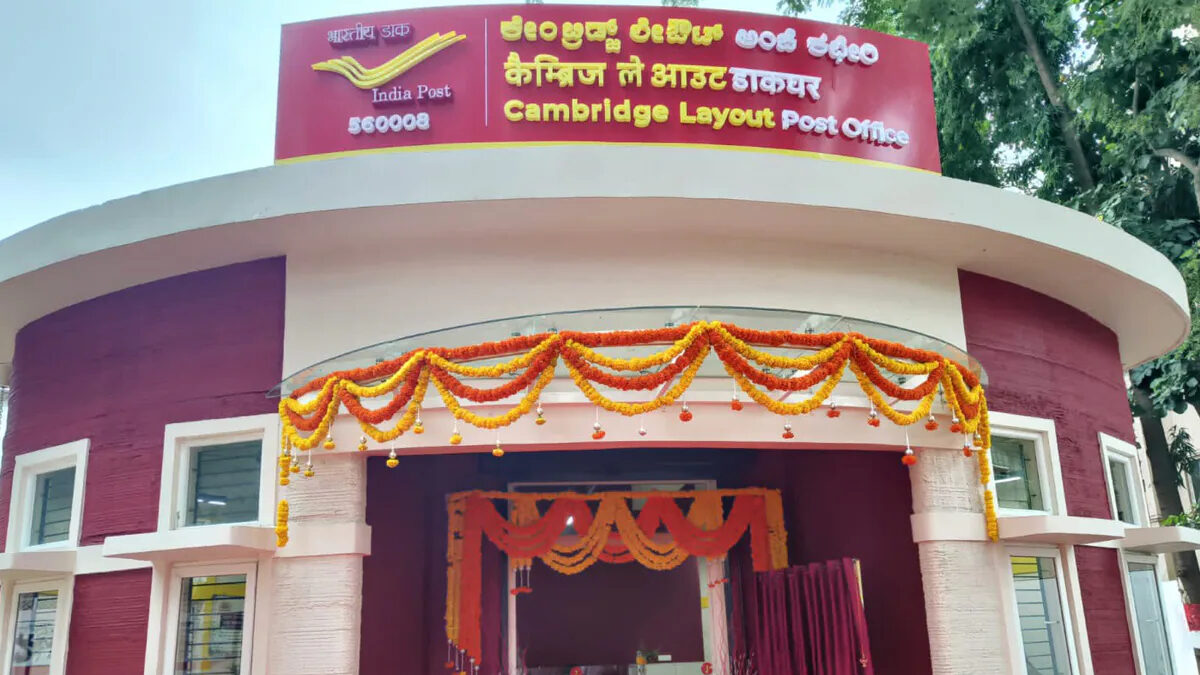
Embracing the spirit of “Atmanirbhar Bharat” (Self-Reliant India), the nation has proudly introduced its very first 3D-printed Post Office. This remarkable achievement not only showcases India’s ongoing technological progress but also offers a glimpse into a potentially transformative future. Let’s deep dive into the details of this groundbreaking project.
Inauguration of the 3D Printed Post Office in Bengaluru
On August 18, India’s Communications Minister, Ashwini Vaishnaw, unveiled the country’s pioneering 3D-printed Post Office at Cambridge Layout in Bengaluru, Karnataka. This remarkable feat was realized through the collaboration of construction company Larsen&Toubro Ltd. and technical guidance from IIT Madras, utilizing the innovative technology of 3D Concrete Printing. The spectacular 1,021-square-foot structure was constructed within a mere 45 days using a fully automated 3D printer, right at the construction site under the open sky.
The “open-sky” construction approach offered an opportunity for Postal officials and the Building Materials and Technology Promotion Council (BMTPC) to observe and appreciate the construction process in real time. In recognition of this achievement, India’s Prime Minister, Narendra Modi, took to social media to express admiration and share images of the newly built post office. Astonishingly, the entire project was accomplished at a cost of just Rs 23 lakhs, which is approximately 40% less than traditional construction methods.
The Role of 3D Concrete Printing
Central to this accomplishment is the technology of 3D Concrete Printing. In essence, this emerging technology aims to expedite house construction while enhancing quality and reducing costs. An automated robotic printer is fed with the 3D model schematics of the building, considering factors such as concrete properties, flowability, load-bearing capacity, inter-layer bonding, and structural integrity. The robot then meticulously deposits layers of concrete based on the provided data. Although the process requires skilled oversight to regulate the pace of concrete deposition, it represents a significant step towards innovative construction methods.
3D-Printed Houses: A Glimpse into the Future
One of the most notable aspects of this technology is its potential for individual customization and the integration of weather-resistant features into building design. This has the potential to make affordable and quality housing accessible to a wider population at reduced expenses. Rajendra Kumar, the Chief Postmaster General of Karnataka Circle, envisions this technology’s future application, stating, “There are plans to construct post offices across 400 vacant sites across the state, where postal services are not accessible. However, its widespread adoption will hinge on the submission of a comprehensive report detailing the success of the inaugural 3D-printed post office.“
In essence, India’s debut into 3D-printed construction heralds a transformative era in building methodologies, underscoring the nation’s commitment to innovation and self-sufficiency.

0 Comments